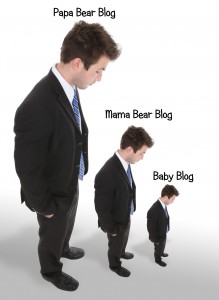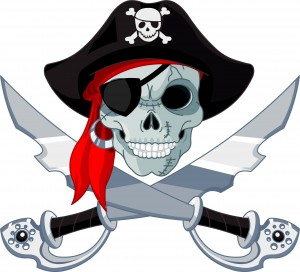 This is going to be a baby blog, though I’m writing it for two VERY important reasons:
This is going to be a baby blog, though I’m writing it for two VERY important reasons:
1. I want to talk about my last post (and stance) on Table of Contents for fiction books.
and
2. I just installed the Disqus plugin (the cool one that’s supposed to allow you to log in via your Twitter, Facebook, etc. account to let you leave a comment (problem is, the ability to leave a comment has now completely deserted my blog and I’m trying to figure out if it will self-correct upon posting a new blog—I know, kind of like rebooting your PC to fix a Windows problem).
On the TOC issues. I received quite a few (wait for it) comments that brought up some interesting and until then unrealized by me reasons why in eBooks it might actually be a bit advantageous to have a TOC. I also went in and read up on installing a TOC [I’m more the kind of guy to toss the directions aside upon opening a project and only go back to them if I can’t finish the job utilizing my own brainpower and (admittedly sometimes egomaniacal) logic]. Thing is, as long as you make sure to set the Chapter Heading font (e.g. Chapter One) to “Heading 1”, Microsoft Word upon clicking “Insert Table of Contents” on whatever page you choose to put your TOC will automagically* put the TOC in with your headings (Chapter One, Chapter Two, Epilogue, etc.) and link to them.
*not a typo; a techno-geek term I really like and predict will one day be honored with inclusion in all official dictionaries.
 Another interesting point regarding a TOC is that the Kindle will put tic marks on the % Read line at the bottom informing you how many chapters there are, and their length, thus making it easier to decide at eleven P.M. whether you want to dive into a new chapter or not (sorry, I have no idea of other eReaders do this or not).
Another interesting point regarding a TOC is that the Kindle will put tic marks on the % Read line at the bottom informing you how many chapters there are, and their length, thus making it easier to decide at eleven P.M. whether you want to dive into a new chapter or not (sorry, I have no idea of other eReaders do this or not).
Also it was pointed out that people who are a tad OCD and actually remember which chapter they were in are assisted when they need to go backwards (for example) and check something, particularly in complicated tomes like Game of Thrones where you need to retreat to check out a map or town name or whatever (I just watch the show, for the record; I think the writing is better).
I still stick to my original stance that a TOC is overkill for a fiction novel yet (as one commenter pointed out) however you feel regarding its usefulness, like pictures and chapter names and most other elements related to the book should be the decision of the author, not Amazon or anyone else (the same author did politely and correctly comment that readers are our lifeblood so if they want ’em, we as writers should probably give a thought to including ’em).
One thing I did decide is to cancel the building of the brute squad, which is just as good because without Andre the Giant it would be (at best) a lame attempt (and I love that guy too much to dishonor his brute squadishness*).
*Also not a typo but not a word I expect to ever see in any dictionary.
Oh, I just thought of something too short for an actual full-length blog but that I wanted to chime in on:
Pics used to make blogs look nicer, more readable, interesting, etc.
 There has been some chatter as of late as to blog writers pirating other peoples’ art. I completely understand this idea at its core. I would not want someone taking the entirety of my novel and selling it for their own profit on another site (or giving it away, although there is the writer out there whose pirated novel became so popular it eventually became a bestseller—guessing the honest folk heard about it through the underground and ponied up—and the dude got a publishing contract). But, miraculous piracy-turned-golden tales, I get it.
There has been some chatter as of late as to blog writers pirating other peoples’ art. I completely understand this idea at its core. I would not want someone taking the entirety of my novel and selling it for their own profit on another site (or giving it away, although there is the writer out there whose pirated novel became so popular it eventually became a bestseller—guessing the honest folk heard about it through the underground and ponied up—and the dude got a publishing contract). But, miraculous piracy-turned-golden tales, I get it.
But here’s the thing: if a person is writing a blog about books and, as a pure example of a book to spruce up the beauty of his blog finds a picture of MY MASTERPIECE and uses it, why the hell would I complain? I’ve heard horror stories, however, of writers who allegedly were successfully sued for copyright infringement for using a picture on their blog that wasn’t theirs (and clearly wasn’t public domain or royalty-free or whatever). Here’s the rule of thumb I always used in the past (and I’m being honest here, so please save me any comments on what a putz I am or was):
If it was anything remotely artistic, original, or clearly self-made, I did everything in my power to reach out to the person and ask permission for my personal blog for which I lose money because I have to pay to host it and it’s completely non-commercial. If the site or the piece was clearly going to be out of my league (i.e. the artist was selling the prints for $10,000 a pop) I found another picture. If the pic I found was on a pay for images site, I didn’t use it (or I paid, if it was that important to me). If, however, the pic seemed completely random and not done for profit (a monkey Photoshopped with an old-timey typewriter), well, I admit, I used it. A few times I linked back to the site if it seemed appropriate (most the time it was an image already on some other schmuck’s blog with no attribution, so yes, I perpetuated the crime).
 What I have done since to lessen my own guilt and do what I can (I still claim it’s EXPOSURE and unless you are selling images for profit you should politely ask for a link-back to your site and be HAPPY ABOUT IT) is pay for a ton of credits on 123rf.com (the number and quality of the images there is comparable to iStockphoto but at perhaps a tenth or less the price) and if I can find what I need there, I pay for it AND include the recommended but optional credit. However, when I really know what I want (like, for example, a dog humping a USB drive), and I know that no reputable site where I can pay is going to have it but there’s definitely some chowderhead out there that created it and it’s clearly NOT an artist or other seriously professional person’s site, I’m fucking using it. Please. Why else would anyone create such hilarious vulgarity??
What I have done since to lessen my own guilt and do what I can (I still claim it’s EXPOSURE and unless you are selling images for profit you should politely ask for a link-back to your site and be HAPPY ABOUT IT) is pay for a ton of credits on 123rf.com (the number and quality of the images there is comparable to iStockphoto but at perhaps a tenth or less the price) and if I can find what I need there, I pay for it AND include the recommended but optional credit. However, when I really know what I want (like, for example, a dog humping a USB drive), and I know that no reputable site where I can pay is going to have it but there’s definitely some chowderhead out there that created it and it’s clearly NOT an artist or other seriously professional person’s site, I’m fucking using it. Please. Why else would anyone create such hilarious vulgarity??
(Okay, it’s not that hilarious, but you have to admit, it makes a stellar point.)
And to you, Goldilocks, and anyone else out there who cares, I apologize: this clearly became a Papa Bear Blog.
Oh well. What else can you expect from a WRITER?
~~~~~~~~~~~~~~~~~~~~~~~~~~~~~~~~~~
The blank page is dead…long live the blank page.
~~~~~~~~~~~~~~~~~~~~~~~~~~~~~~~~~~
Big Medium Smaller Image credit: nruboc / 123RF Stock Photo (Text added by Blog Author)
Pirate Image credit: dazdraperma / 123RF Stock Photo
Tic Mark Image credit: sergio77 / 123RF Stock Photo



Just testing out the new Disqus commenting feature. Nothing to be alarmed about. I may actually give my own post a star, so don’t report me to the “self-promotion” police. It’s just a test. 🙂
Leaving a reply logged in with FB.
I thought I give you a comment to give you a third-party test comment. I also gave you a star. Have a great weekend, Rob!
In response to my previous email, comments are now visible again and I was not required to sign into Disqus to leave this.
JJ
So, you came to your senses? You’re not sending the ROUS’s to Jeff Bezos’s house, pushing them through the doggie door? Actually, you’re right; they wouldn’t fit through the doggie door.
Yeah, so you drank some more of the Amazon Kool-Aid and decided that in the grand scheme of things a ToC won’t make or break your novel?
But what about what you said about Amazon removing reviews…? Is the book up? What book are we talking about, by the way?
Sorry, I’ve been up 20 hours. A minute ago I was hallucinating that I saw a picture of a dog humping a USB drive!
Oh, and here’s another little Word trick. Place your cursor anywhere in your section/chapter heading and open the paragraph options. Change the Outline Level from “Body Text” to “Level 1”. This will include that text in your TOC without requiring you to change it from the Normal style. (I’ve found that some eBook conversions work better when everything is styled the same.) I believe (but may be wrong) that it’s also this outline level that the Pubit conversion uses to add a TOC to the ePub file, so using that trick you can have full control over how it will be presented in, say, the Adobe Digital Editions eReader for an ePub download.
I’m writing this from memory, but if you play with it a bit and then shoot it through something like Calibre, I think you’ll find that setting up a TOC isn’t all that much extra work, especially if you know what’s required upfront and can adjust those settings as a matter of habit when you start a new chapter. (Personally, I have a BlankChapter.doc file that already has everything formatted the way I want it, and then I can simply open that and start typing.)
Howdy Rob!
Just wanted to comment real quick on using the Disqus comment system. I used it for awhile, had awesome results, then BLAM! I started receiving eMails about people having comment issues, namely not being able to leave them.
Good luck with it, and keep an eye out for people who may have issues in the future. I switched to Livefyre (no, I’m not getting paid for saying this) and haven’t had any issues yet.
Good luck! I’m glad to see things are still going well for you. 🙂
Thanks, Kirkus. I may give Livefyre a look. I think the bottom line is “if it ain’t broke, don’t fix it”. I just wanted to give the reader an easier way to use a social media service to sign in for comment (I really like that feature on other blogs, not having to type my info every time), but alas, it wasn’t to be I guess. 🙂
Just testing to see if, in addition to social site logins a use can still just use name and email…:)
Yes same here. I had it on my blog ( disqus ) and ran into issues with people not being able to comment. Pity as it’s a great comment plugin
The technology is overwhelming. As soon as I think I’m up to date, I find I’m three months behind. By the time I learned to spell obsolete, I already was.
Yeah. I tried to comment on the previous blog and it wouldn’t let me. But I don’t remember what I said. Good info here!
A baby blog? Whoa.
Thanks for the tip on 123rf.com. It solves a problem I keep running into, and I face the same moral dilemma you do.
And to get back to the original point, and TOCs in novels: I have one in mine. I did from the beginning, because in my book, I thought that chapter titles made sense. To me, each chapter is a mini-story in itself, and I liked the extra bit of information that the title added. So, where readers might be absolutely clueless about how many chapters they’ve read, they are more likely to remember the name, or at least the idea, of the the chapter they left off in.
Yeah, what he said.
By the way, what are these tick marks of which you speak? I see nothing of the sort in ebooks on my Fire.